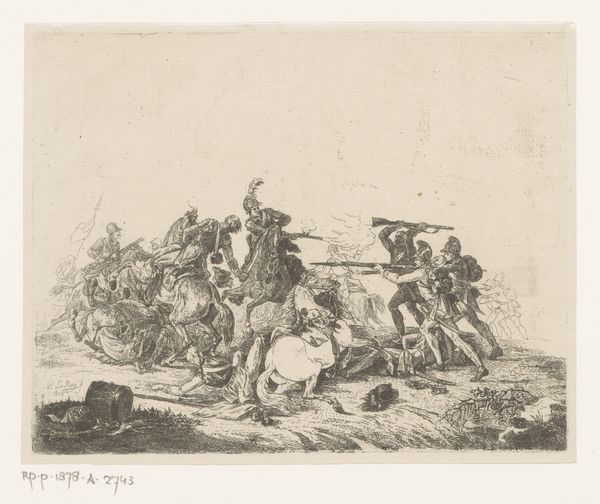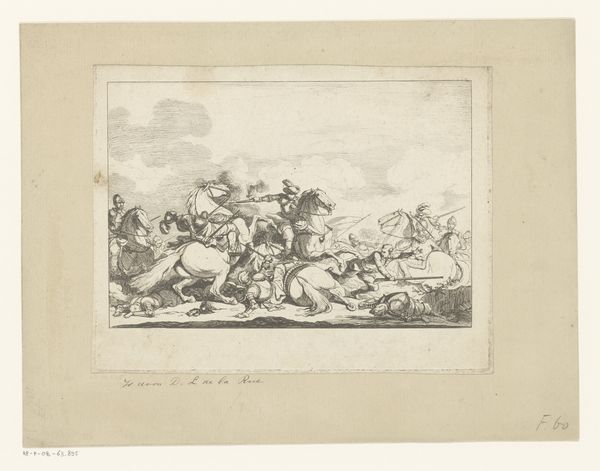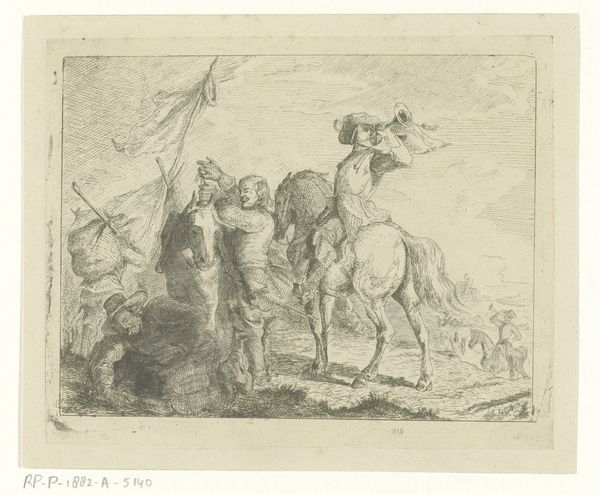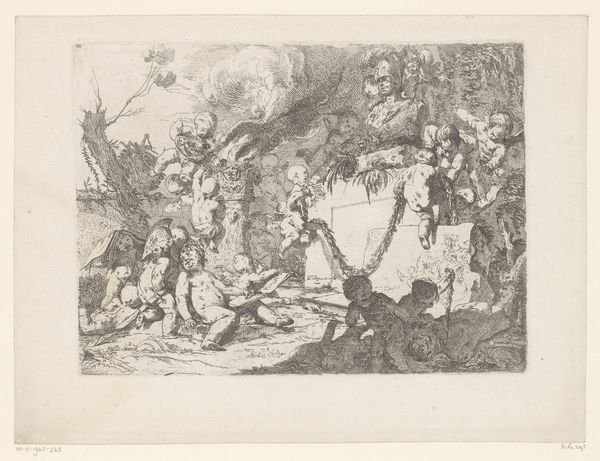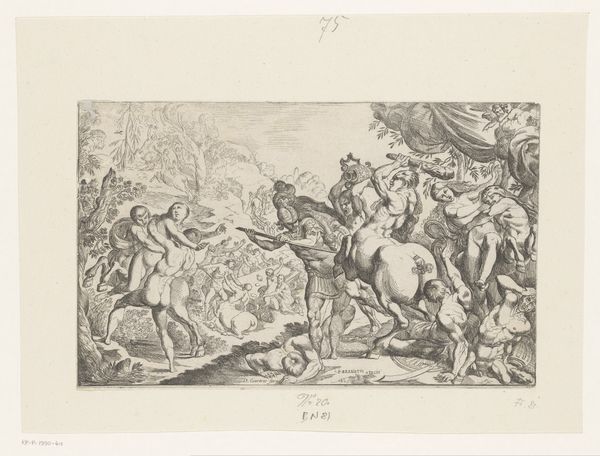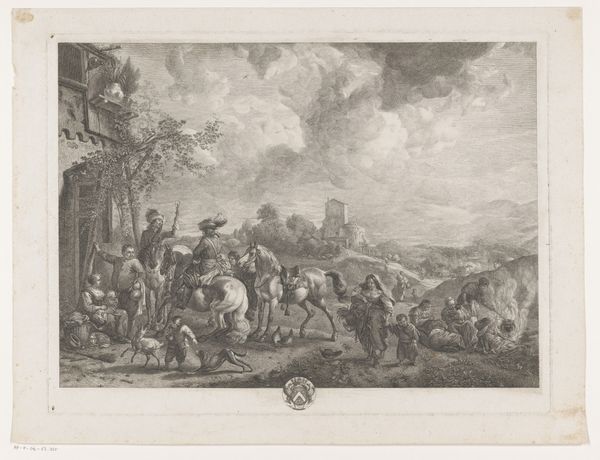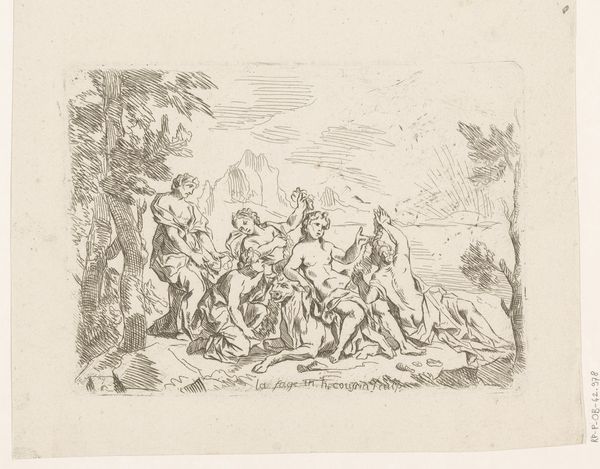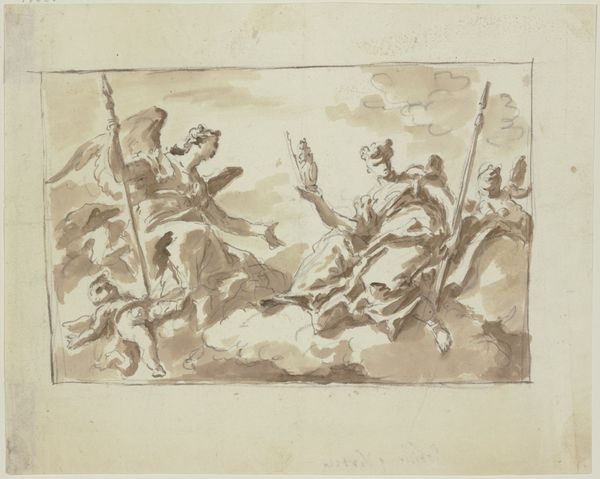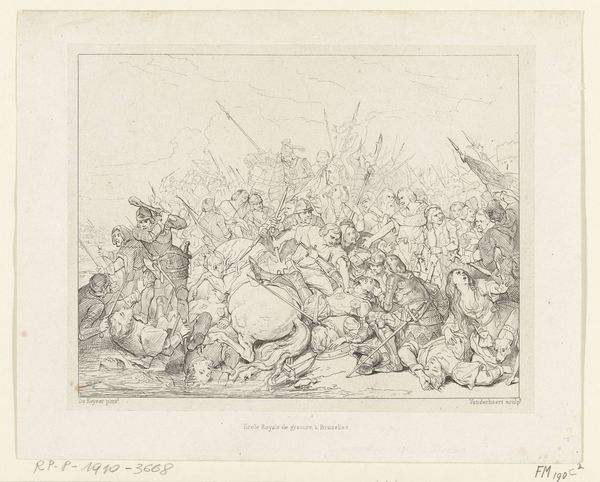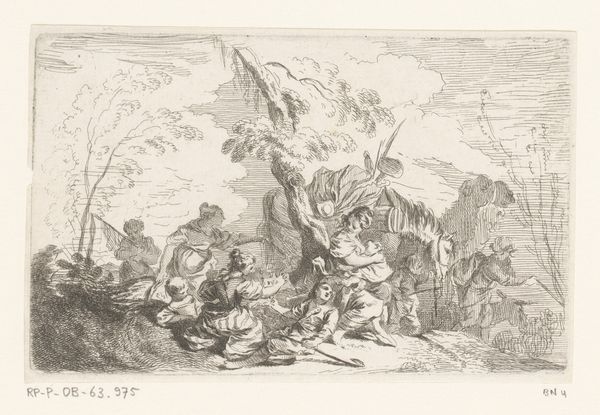
etching
#
narrative-art
#
etching
#
figuration
#
romanticism
#
history-painting
Dimensions: height 144 mm, width 200 mm
Copyright: Rijks Museum: Open Domain
Curator: Well, this little scene is teeming with chaos. Henri François Schaefels captured quite a moment in his etching "Strijdscène met ruiter te paard," dating back to 1846. It feels a little like… utter madness caught on a copper plate. Editor: Utter madness is right! My initial impression is of controlled frenzy. All those intricate lines building up a whirlwind of conflict. I can almost hear the clatter of hooves and the clash of steel. It evokes a potent romanticism, like history is breathing right here in front of us, stylized by an adept's hand. Curator: Stylized for sure! There's something so appealing about the romance of the past as seen through 19th-century eyes. The central figure on horseback—note the elaborate headwear and raised sword—what story is woven within these lines for you? Editor: Absolutely! It's the raised sword, isn't it? That defiant gesture that embodies the eternal archetype of a leader riding high, fueled by valor. But the fascinating thing is how he is staged upon what seem like defeated enemies, quite a literal representation of triumph but there's a slightly haunting symbolism embedded. Does his victory truly offer peace or continue the unending cycle of power struggles? Curator: Ah, I see what you mean. He’s elevated, yes, but also precariously perched. Look at the background too; the castle barely emerges from the cloud of battle, not as solid victory as perhaps he hopes. It has a distinctly cyclical feel. I see no resolution in sight. It’s rather brilliant really! Editor: Right, like he's an avatar of eternal battles! Schaefels uses all these images to remind the viewer that triumph can always hold seeds of future conflicts; cultural memory layered and speaking to the endless battles man makes for himself. A really provocative idea. Curator: I have to agree! What started as a romanticized history painting slowly becomes something…darker. And the etching medium seems perfectly matched to express a vision where heroes rise, yet the violence does not wane. It definitely provokes. Editor: Agreed! Who knew that what at first seemed like romanticism could reveal such complicated symbolic layers when approached by the language of dreams? A really interesting discussion for me!
Comments
No comments
Be the first to comment and join the conversation on the ultimate creative platform.
